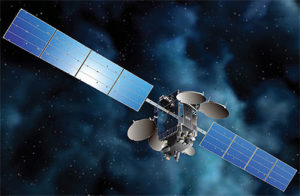
Azerbaijan’s second communications satellite, Azerspace-2, will reach its intended Geostationary orbit – 45 degrees East longitude – in January or February 2019, according to the country’s state space corporation Azercosmos, reports Trend News Agency.
According to the company, at present the satellite is in its transfer orbit and is very nearly approaching its test orbit.
According to Azercosmos data, Azerspace-2 will reach its test orbit by mid-December 2018, after which tests of the satellite platform will begin. Upon completion of the tests, the satellite will be placed in its final and operational orbit at 45 degrees east longitude in January 2019. Afterwards, Azercosmos will transfer control to commercial operations.
“The satellite will be fully ready for commercial operation in January-February 2019,” said the company in a statement to Trend News Agency.
The new Azerspace-2 satellite is a follow-on capability to Azercosmos’ first communications satellite, Azerspace-1, and will enable the company to expand its geographical coverage and the range of telecommunications services it provides. In addition, the Azerspace-2 satellite will allow Azercosmos to take part in and compete for large international tenders, which has not been possible before.
The launch of Azerspace-2 was carried out from the ELA-3 launch complex of the Guiana Space Centre in French Guiana on 26 September 2018 by an Ariane 5 satellite launch vehicle from the French launch services company Arianespace. The Azerspace-2 satellite is designed to provide a number of telecommunications services for countries in Europe, Central and South Asia, the Middle East, and Africa.
Trend News Agency also reports that Azerbaijan’s first communications satellite, Azerspace-1, brought in revenues worth U.S.$88 million since its launch into Geostationary orbit, according to Azercosmos.
Azercosmos told the Trend News Agency that 80 percent of Azerspace-1’s capacity have been commercialized. Azerspace-1 was launched into Geostationary orbit on 8 February 2013 from the Guiana Space Centre by Arianespace.
 SpaceWatch.Global An independent perspective on space
SpaceWatch.Global An independent perspective on space




